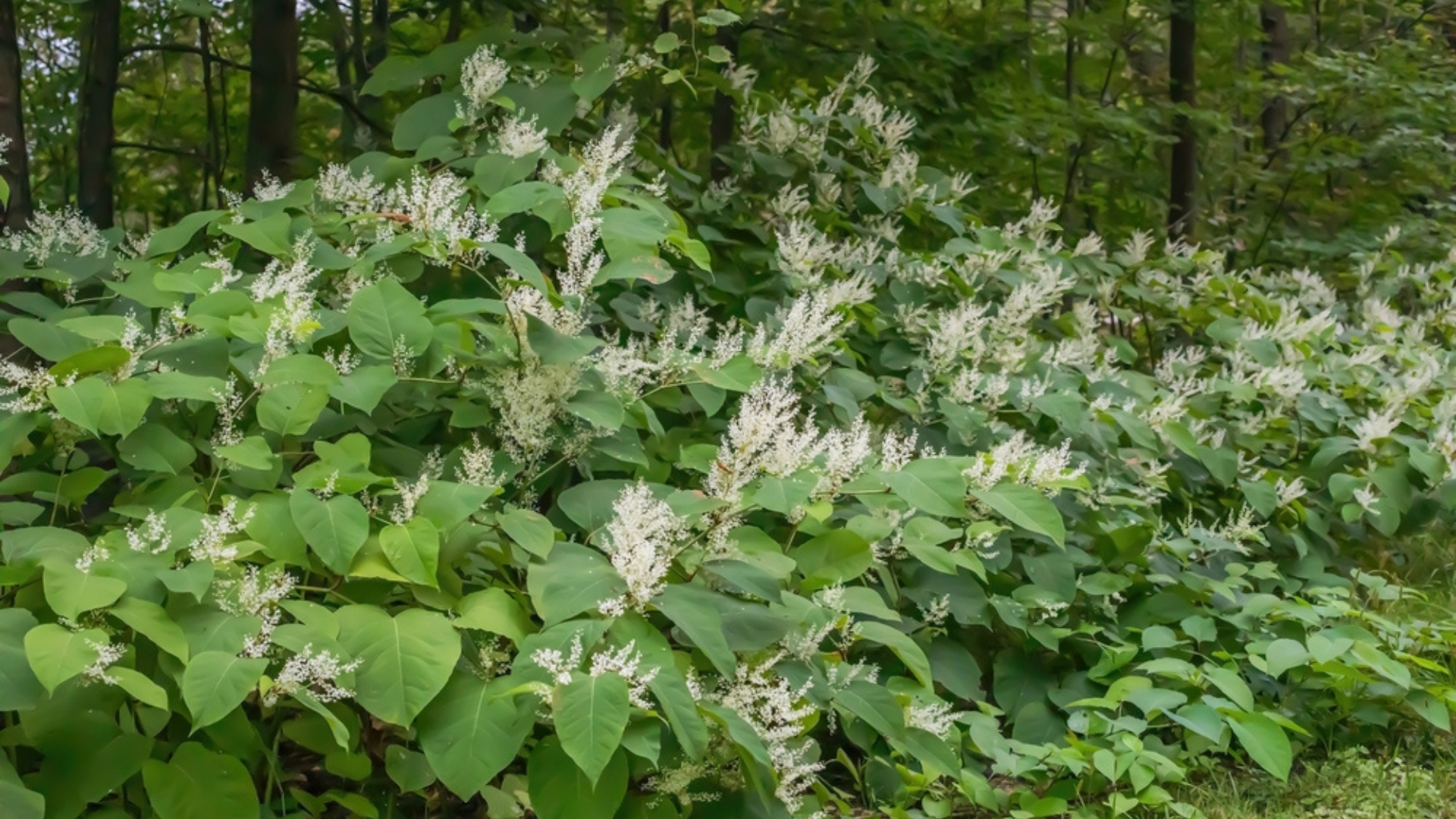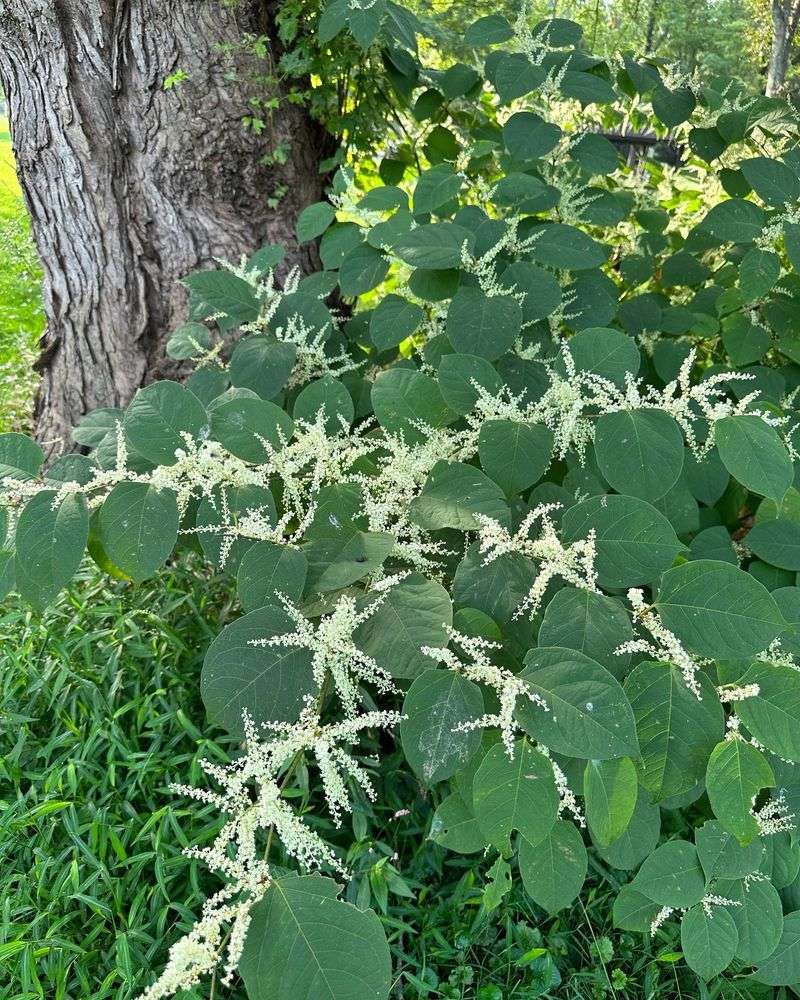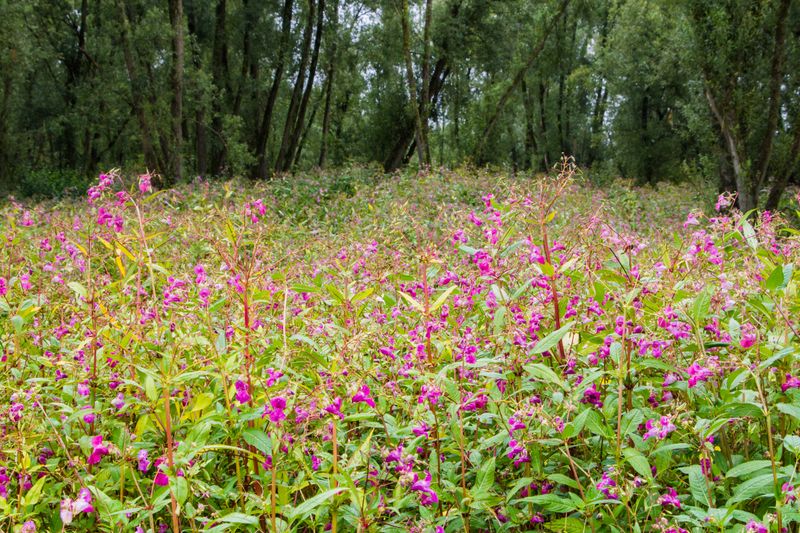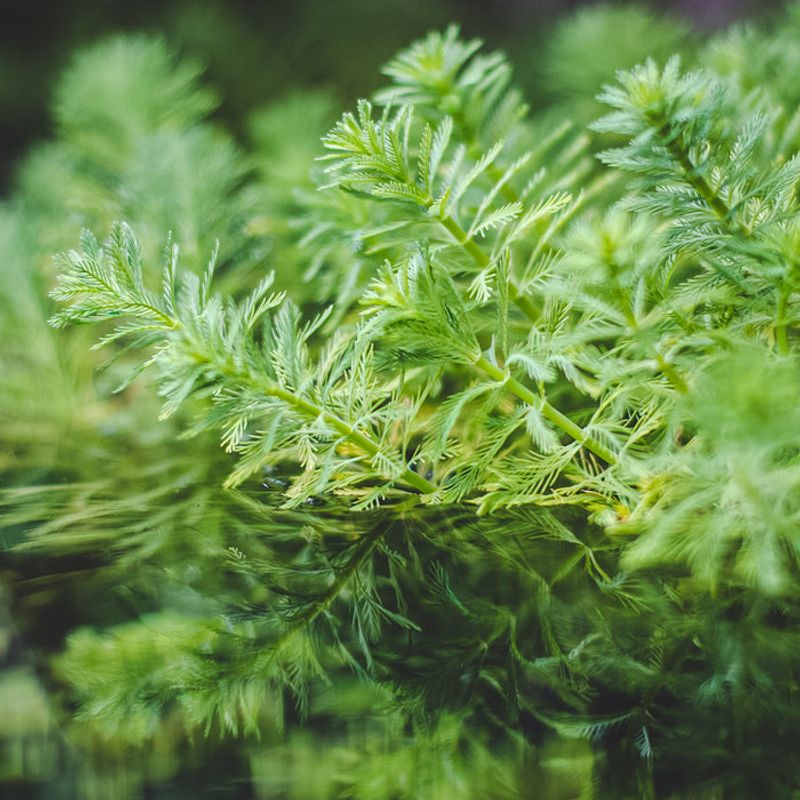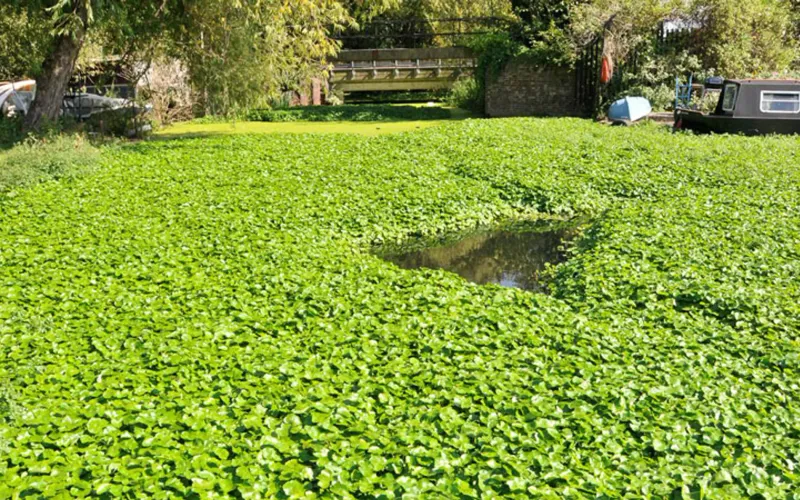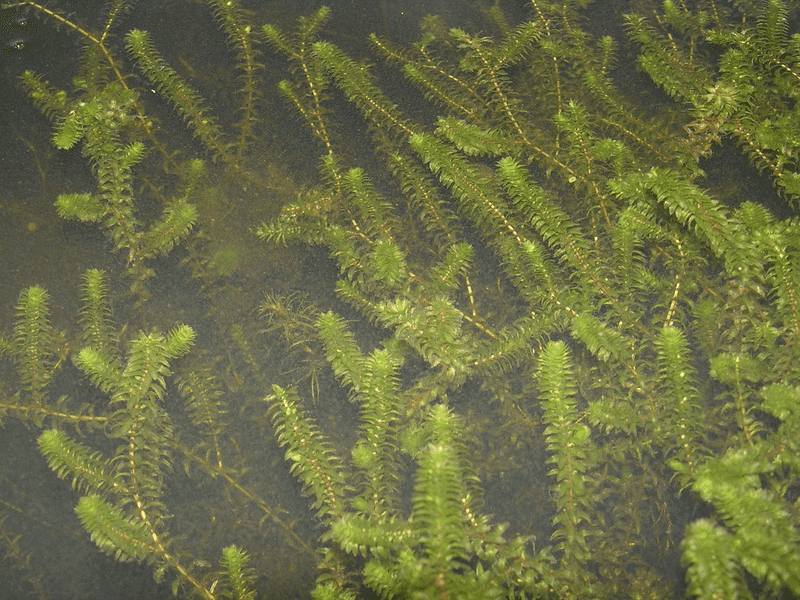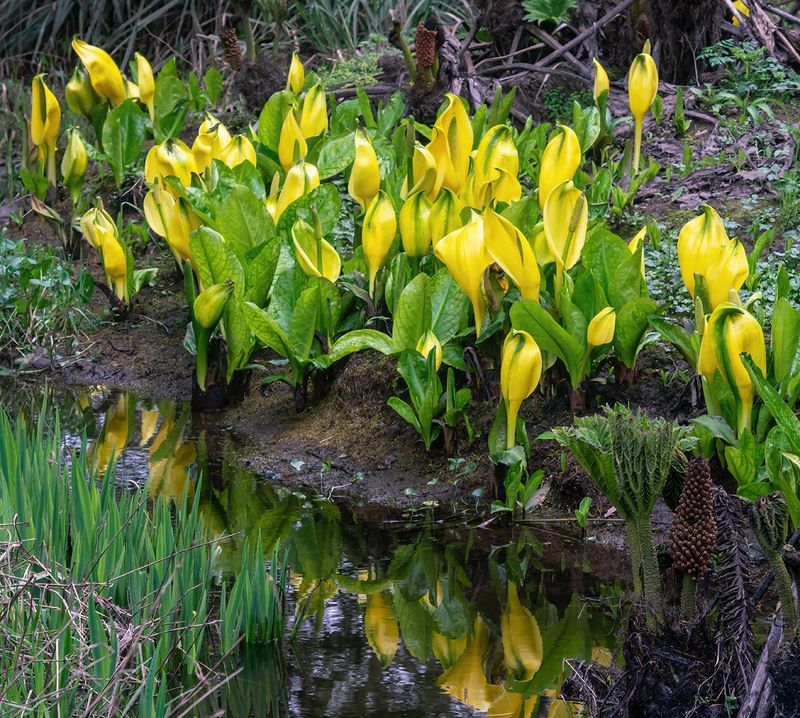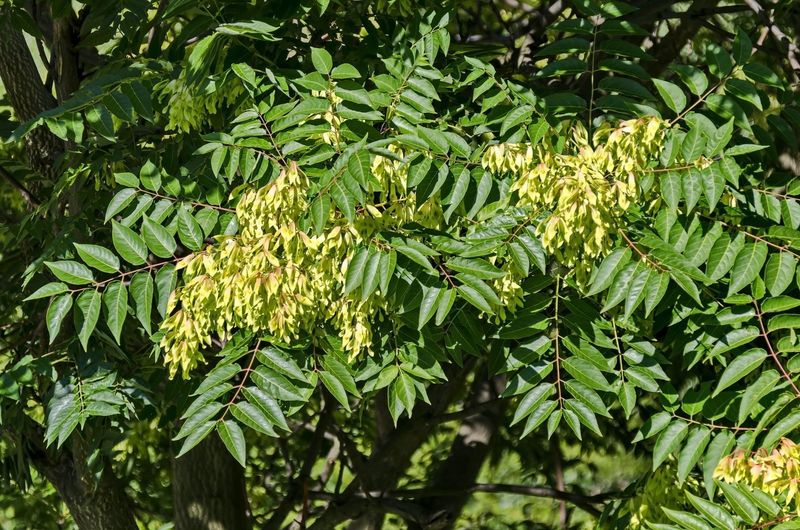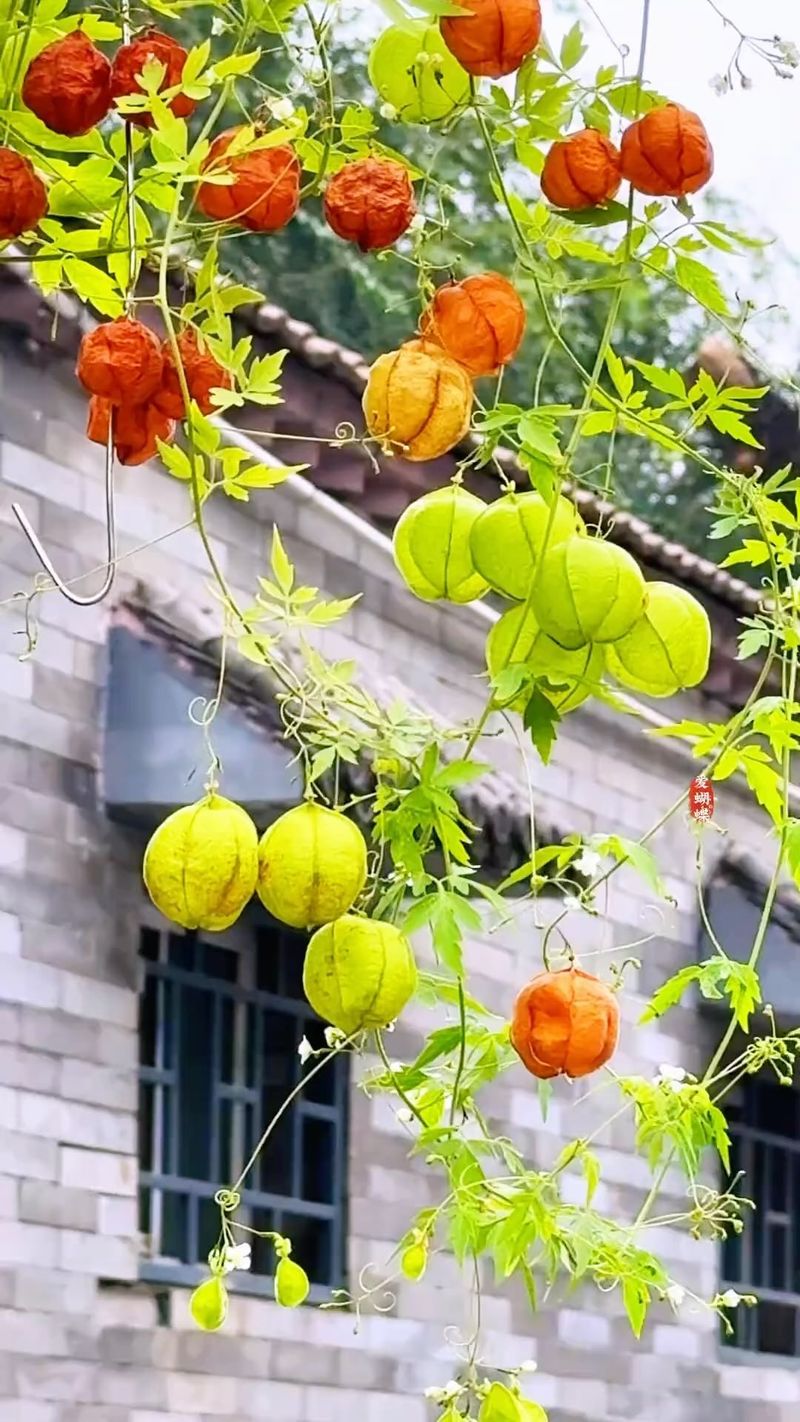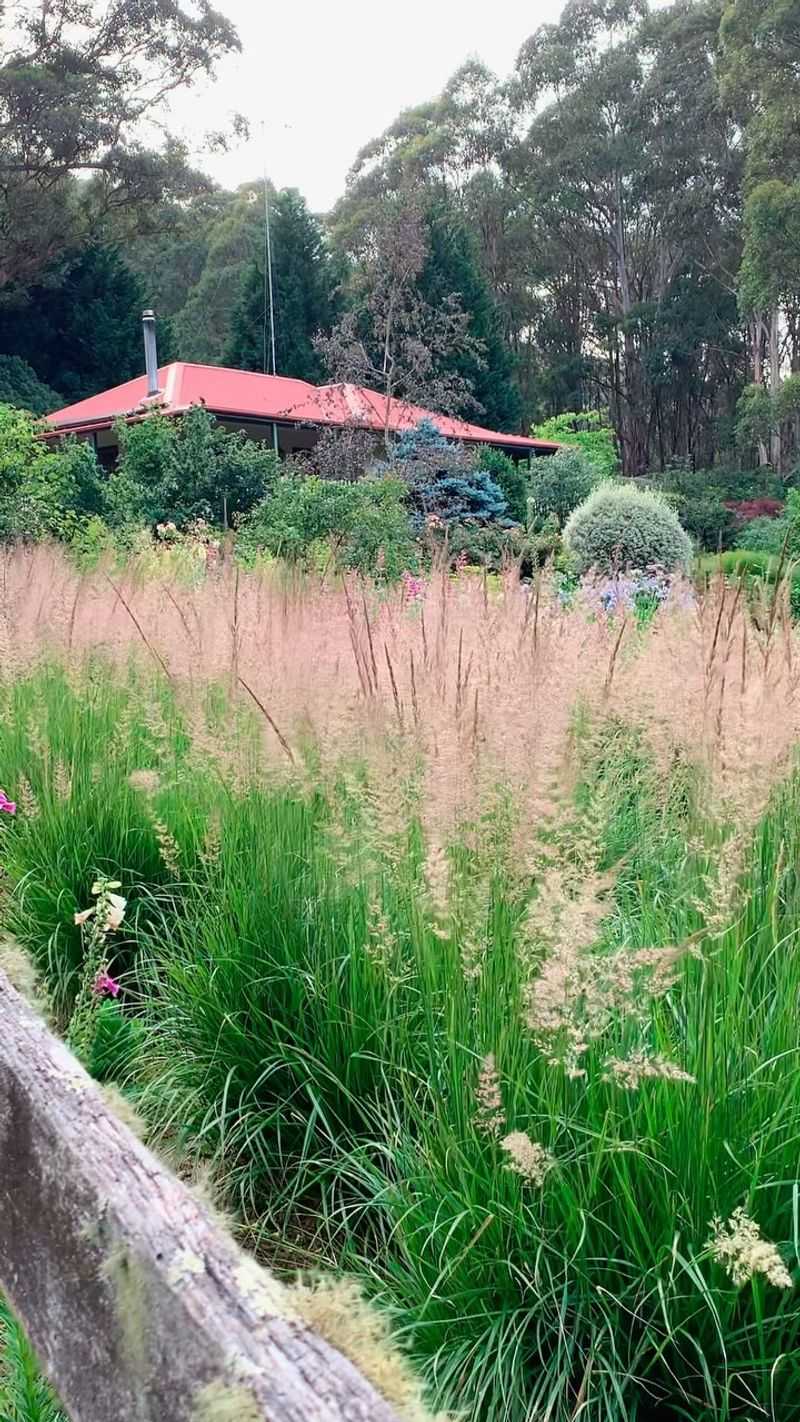Many plants are beautiful, but not all are welcome in your garden. In Europe, certain plants are against the law due to their invasive nature or potential harm. Knowing these plants helps protect local ecosystems and keeps your backyard safe. Discover why these plants are problematic and how they affect the environment.
1. Japanese Knotweed (Fallopia japonica)
It might look like just another leafy plant with delicate white flowers, but that’s Japanese Knotweed—and it’s bad news for your garden (and your home). This aggressive invader grows fast and furious, with roots strong enough to crack through concrete, foundations, and even roads.
It spreads like wildfire, which is why it’s illegal to plant or grow in your backyard across Europe. Spot it? Don’t tackle it alone! Call in the pros for safe removal, as even a tiny leftover piece of root can regrow and start the whole mess again.
Fun fact: some areas require land surveys for Knotweed before selling property—it’s that serious!
2. Giant Hogweed (Heracleum mantegazzianum)
Towering over the garden like something out of a sci-fi movie, this plant can reach an intimidating 20 feet tall—that’s Giant Hogweed, and it’s as dangerous as it looks. Its sap reacts with sunlight and can cause serious burns, blisters, and even long-lasting scars if it touches your skin.
Originally from the Caucasus region, it’s now spread across Europe, posing a threat to both people and local wildlife. Because of its hazardous nature, growing or spreading Giant Hogweed is strictly banned.
And here’s a tip: never attempt to remove it without proper protective gear—the sap can still get you even from a broken stem!
3. Himalayan Balsam (Impatiens glandulifera)
Those bright pink blooms might catch your eye, but don’t be fooled—Himalayan Balsam is a fast-spreading troublemaker. It quickly takes over riverbanks and wetlands, crowding out native plants and leaving soil exposed, which leads to erosion and damages ecosystems.
Its real party trick? Explosive seed pods that can launch seeds up to 20 feet away, helping it spread far and wide in no time. Because of its impact on biodiversity and habitats, growing this plant is illegal in many European countries.
Bonus tip: even cutting it down at the wrong time can spread its seeds, so timing and care are key if you’re managing an outbreak!
4. Water Hyacinth (Eichhornia crassipes)
It might float beautifully on the water with those striking purple flowers, but Water Hyacinth is a silent menace beneath the surface. This invasive plant forms thick mats that block sunlight from reaching underwater plants, starving fish and other aquatic life of oxygen.
It spreads fast, clogging up rivers, lakes, and canals across Europe, turning vibrant waterways into lifeless swamps. Because of its destructive nature, it’s illegal to grow or release Water Hyacinth in your garden.
Here’s a wild fact: those dense mats can double in size in just two weeks—suffocating ecosystems before you know it!
5. Parrot’s Feather (Myriophyllum aquaticum)
With its soft, feathery leaves, Parrot’s Feather might look like the perfect addition to a pond—but don’t be fooled by its charm. This plant quickly clogs waterways, creating thick mats that block sunlight and choke out native aquatic life.
It spreads like wildfire, turning healthy ecosystems into stagnant, lifeless pools. That’s why planting Parrot’s Feather in your backyard is illegal across much of Europe—it’s just too risky.
Even a small fragment can regrow and start an invasion, making it nearly impossible to control once it takes hold!
6. Floating Pennywort (Hydrocotyle ranunculoides)
It only takes a little bit of Floating Pennywort to turn a peaceful pond into a tangled mess. This fast-growing plant spreads across water surfaces, forming dense mats that block sunlight and suck the oxygen out of the water—leaving fish and native plants struggling to survive.
Originally from North America, it’s now causing serious problems in European waterways. Thanks to its rapid spread and environmental damage, growing Floating Pennywort in your backyard is illegal.
Here’s a heads-up: even small pieces that break off can float away and start a whole new colony elsewhere!
7. Curly Waterweed (Lagarosiphon major)
With its spiraling, ribbon-like leaves, Curly Waterweed might seem like a harmless underwater plant—but don’t be fooled. It grows fast and forms thick underwater forests that block sunlight and crowd out native species, throwing entire aquatic ecosystems out of balance.
This aggressive spread makes it a serious threat to European waterways. Because of its invasive nature, planting Curly Waterweed in your garden or pond is illegal, helping to protect local aquatic life.
8. American Skunk Cabbage (Lysichiton americanus)
Big yellow blooms might catch your eye, but get a little closer and you’ll understand why American Skunk Cabbage isn’t welcome—it stinks, literally!
This plant gives off a foul odor and quickly takes over wetlands, pushing out native plants and upsetting delicate ecosystems.
Originally from North America, it’s made its way into Europe, where its rapid spread and overpowering smell have earned it a spot on the banned list. Planting it in your garden is illegal, and for good reason. Fun fact: its roots are so tough that even digging it out can be a serious challenge!
9. Chilean Rhubarb (Gunnera tinctoria)
Those massive, tropical-looking leaves might make Chilean Rhubarb a showstopper, but beneath that bold greenery lies a serious threat. This fast-spreading plant quickly smothers local vegetation, taking over landscapes and squeezing out native species.
Originally from South America, it’s crept into European gardens where its aggressive growth has made it illegal to plant. Keeping it out helps protect local biodiversity and prevent yet another ecosystem takeover. B
Its leaves can grow up to two meters wide—impressive, but way too much for fragile habitats to handle!
10. Tree of Heaven (Ailanthus altissima)
With a name like Tree of Heaven, you’d expect something magical—but this fast-growing invader is anything but. It shoots up aggressively, sending out roots that can damage buildings, roads, and sidewalks, while its leaves release a foul smell that’s far from heavenly.
Native to China, it’s now spread across Europe, causing havoc in urban areas and natural spaces alike.
Due to its destructive nature and ability to overwhelm local ecosystems, planting Tree of Heaven in your backyard is illegal in many parts of Europe. It can grow several feet in just one season, making it nearly impossible to control once established!
11. Common Milkweed (Asclepias syriaca)
Those soft pink blooms might lure in butterflies, but Common Milkweed doesn’t know when to stop. It spreads aggressively, taking over fields and meadows, leaving little room for native plants to thrive.
While it’s a favorite for pollinators like monarch butterflies, its invasive streak in Europe makes it illegal to plant in your backyard.
Protecting native flora is key to maintaining balanced ecosystems. Here’s a twist: though beloved in some regions, its unchecked growth in Europe turns it from helpful to harmful fast!
12. Chinese Tallow (Triadica sebifera)
Those fiery autumn colors might make Chinese Tallow a tempting addition to your garden, but don’t let its beauty fool you.
Outside its native Asia, this fast-spreading tree quickly takes over, displacing local trees and plants and throwing ecosystems out of balance. In Europe, its invasive nature has led to strict controls—planting Chinese Tallow in gardens is illegal to help protect native habitats and maintain biodiversity.
Each tree can produce thousands of seeds, making it a master at spreading far and wide if left unchecked!
13. Balloon Vine (Cardiospermum grandiflorum)
Those cute, papery seed pods might make Balloon Vine look harmless, but it’s a sneaky climber that smothers anything in its path. This fast-growing vine wraps around and overwhelms other plants, disrupting ecosystems and pushing out native species.
Because of its aggressive spread and impact on local flora, it’s illegal to grow Balloon Vine in European gardens. Keeping it out helps maintain biodiversity and protect fragile plant communities.
Each of those charming pods holds seeds ready to hitch a ride on the wind, spreading the invasion far and wide!
14. Purple Pampas Grass (Cortaderia jubata)
Those tall, feathery plumes of Purple Pampas Grass might add drama to a landscape, but behind the beauty lies a serious problem. Its seeds travel far and wide on the wind, quickly colonizing open spaces and edging out native European plants.
Originally from South America, this ornamental grass turns invasive fast, dominating habitats and throwing ecosystems off balance. To keep local species thriving without the competition, growing Purple Pampas Grass is banned in many parts of Europe.
A single plant can release millions of seeds each year, making it a tough invader to stop once it gets going!
15. Alligator Weed (Alternanthera philoxeroides)
With its thick green leaves and clusters of tiny white flowers, Alligator Weed might seem harmless—but it’s a relentless invader. Thriving both in water and on land, it forms dense mats that smother native plants, disrupt waterways, and block out sunlight and oxygen needed by aquatic life.
Originally from South America, it has become a major problem in European rivers, lakes, and wetlands. Because of its aggressive spread and impact on ecosystems, growing Alligator Weed is illegal across Europe.
It can even survive being uprooted and float downstream to start a new colony!
16. Japanese Hops (Humulus japonicus)
Japanese Hops don’t just climb—they conquer. With their rapid growth and lobed leaves, these aggressive vines scale trees, fences, and anything else in their path, quickly smothering native plants beneath a blanket of green.
Native to Asia, they’ve spread into Europe, where they’ve become a serious nuisance, outcompeting local flora and disrupting habitats. Because of their invasive nature, planting Japanese Hops in your backyard is illegal, helping to safeguard local ecosystems.
Their tough vines can grow up to 35 feet in a single season, making them a challenge to control once they take hold!
17. Fanwort (Cabomba caroliniana)
Fanwort may charm with its delicate, fan-shaped leaves swaying beneath the water’s surface, but don’t be fooled—this beauty is a beast in disguise. It spreads rapidly underwater, forming dense thickets that choke out native plants and throw aquatic ecosystems off balance.
Its invasive nature has made it a serious problem in European waterways. To protect native aquatic life and maintain healthy ecosystems, it’s illegal to grow Fanwort in your backyard.
Even a small fragment of this plant can regrow and start a whole new invasion, making it incredibly tough to control once it takes root!

